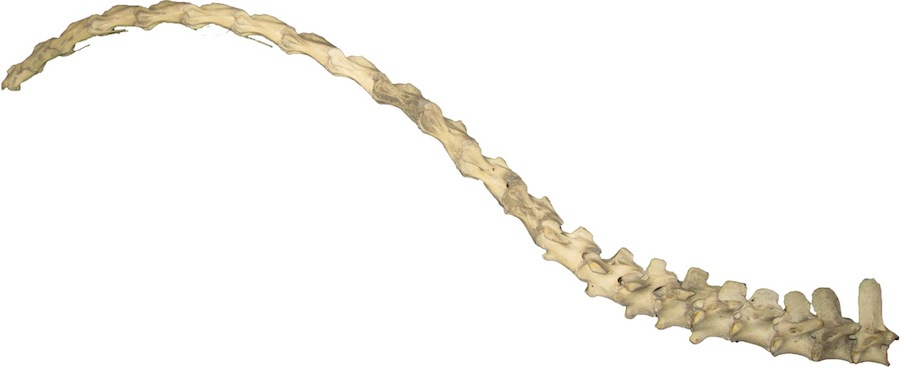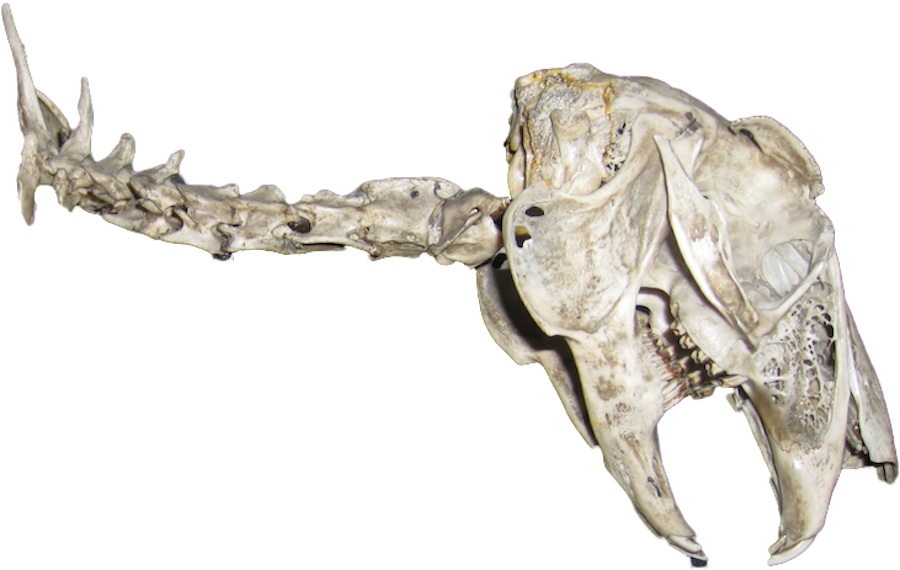| A fair number of sauropods have sufficiently complete axial skeletons to be reassembled, sometimes in actuality, but at least graphically, based on compositing the lateral view images of the original vertebrae. One must be careful to insure that each image is scaled precisely (those that comprise a given neck in a given manuscript might not have in fact been printed at a common scale as claimed, e.g., as 10:1). But put them together, inserting condyles in cotyles with the same close separation as found in various articulated series, and here's what you find: monotonously straight necks with no particular trend towards a sigmoid (reflex) curve, no evidence of anything interesting happening at the transition from anterior dorsals to posterior cervicals, and a bit of a droopy ventral curve towards the head (particularly in Dicraeosaurus). This theme repeats itself across every sauropod neck I've analyzed and composited. The necks were basically straight, at least osteologically, and particularly so in the critical transition from back to neck. |
|
Apatosaurus:
 Brachiosaurus:
Brachiosaurus:

Cetiosaurus:
 Dicraeosaurus:
Dicraeosaurus:
 Diplodoocus (dorsals and cervicodorsals):
Diplodoocus (dorsals and cervicodorsals):
 Euhelopus:
Euhelopus:
 Mamenchisaurus:
Mamenchisaurus:

amd here are a few other necks (photographed at the University of Cambridge Zoology Museum, also in ONP, such as Varanus nilotictus (Nile Monitor):
 Struthio camelus (Ostrich):
Struthio camelus (Ostrich):
 Lepus europaeus (Brown Hare):
Lepus europaeus (Brown Hare):

|
 Brachiosaurus:
Brachiosaurus:

 Dicraeosaurus:
Dicraeosaurus:
 Diplodoocus (dorsals and cervicodorsals):
Diplodoocus (dorsals and cervicodorsals):
 Euhelopus:
Euhelopus:
 Mamenchisaurus:
Mamenchisaurus:

 Struthio camelus (Ostrich):
Struthio camelus (Ostrich):
 Lepus europaeus (Brown Hare):
Lepus europaeus (Brown Hare):
